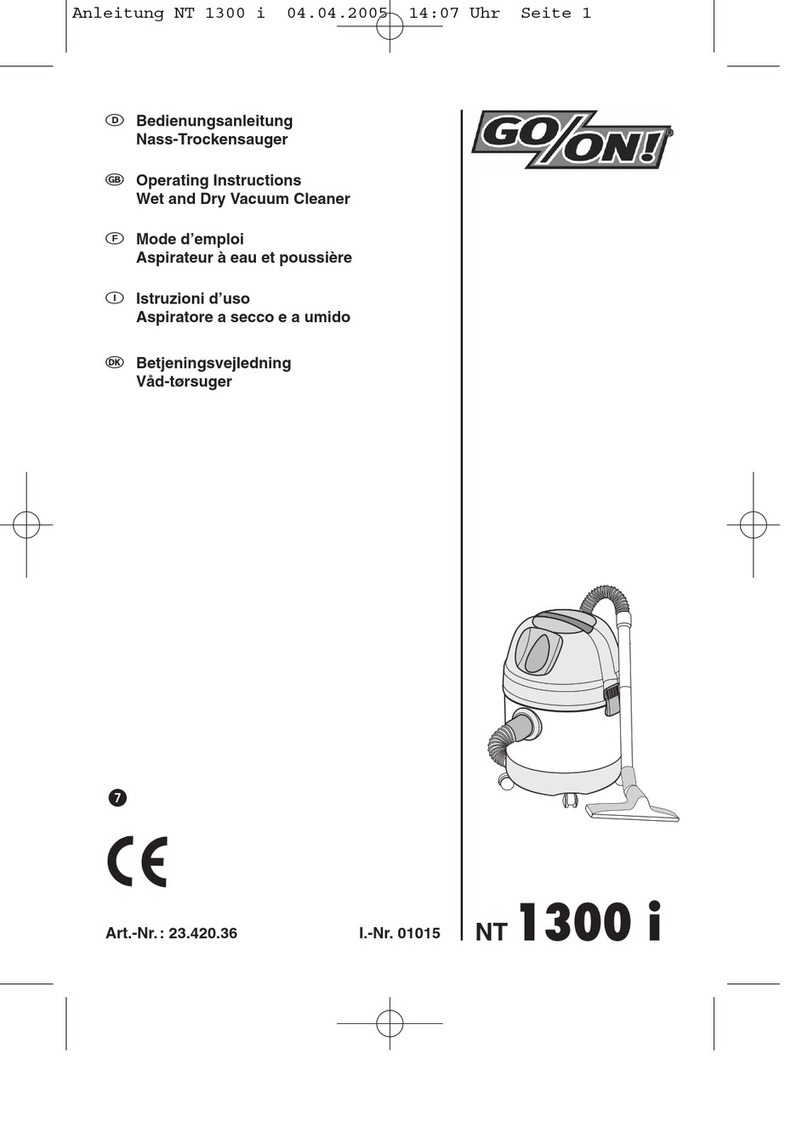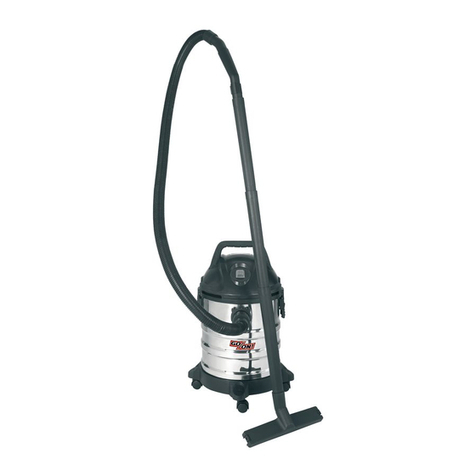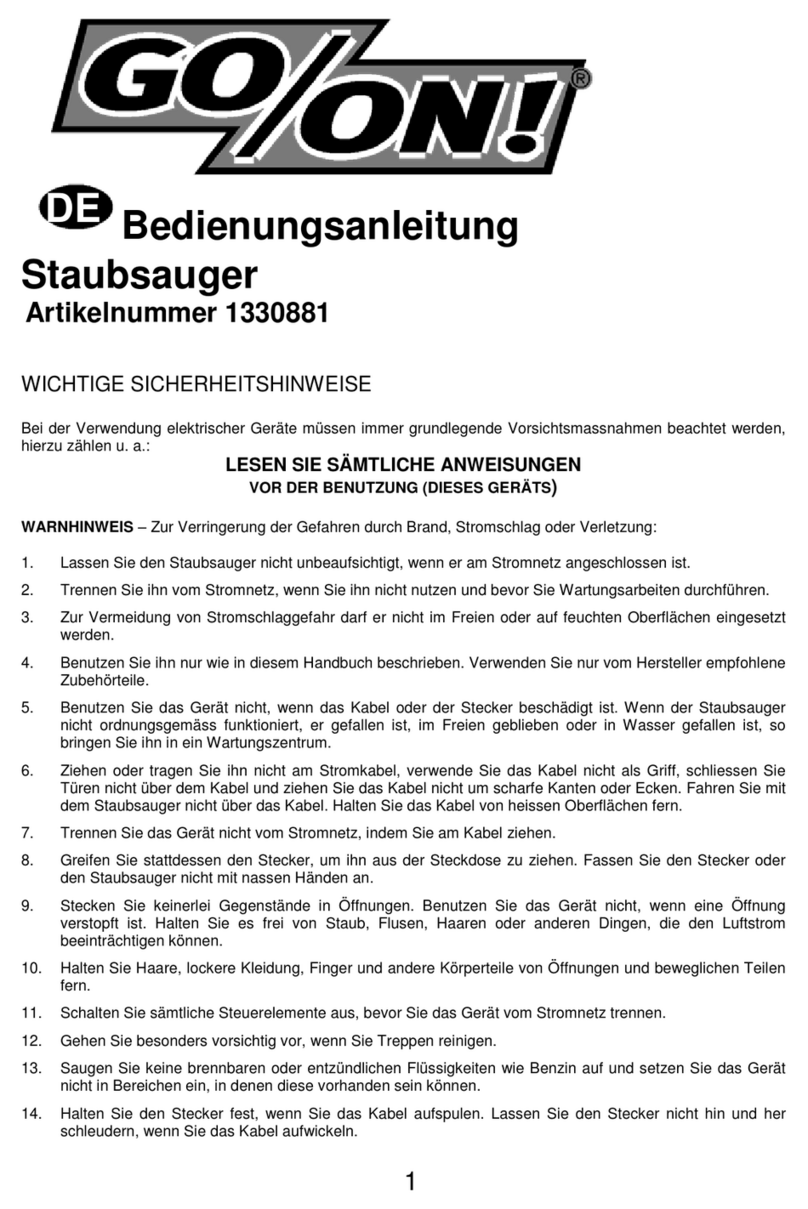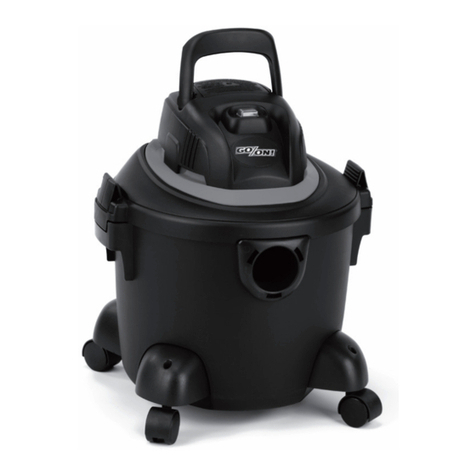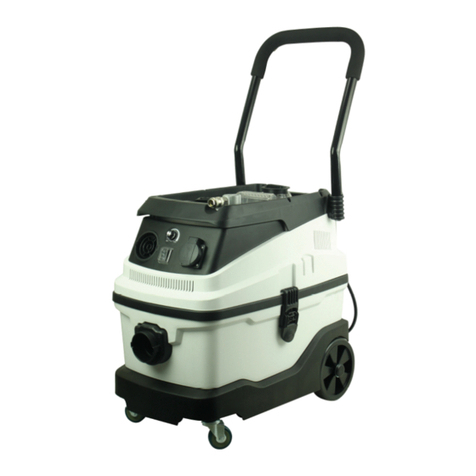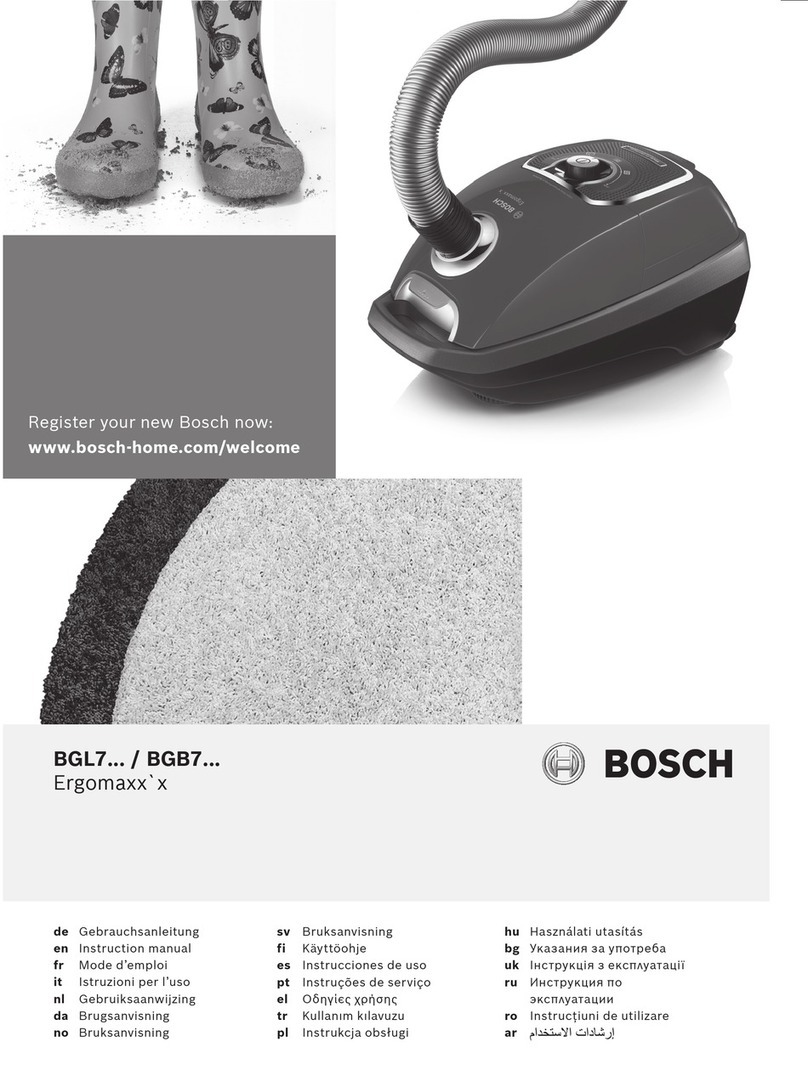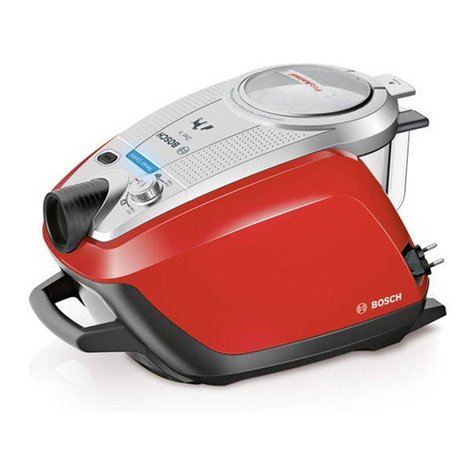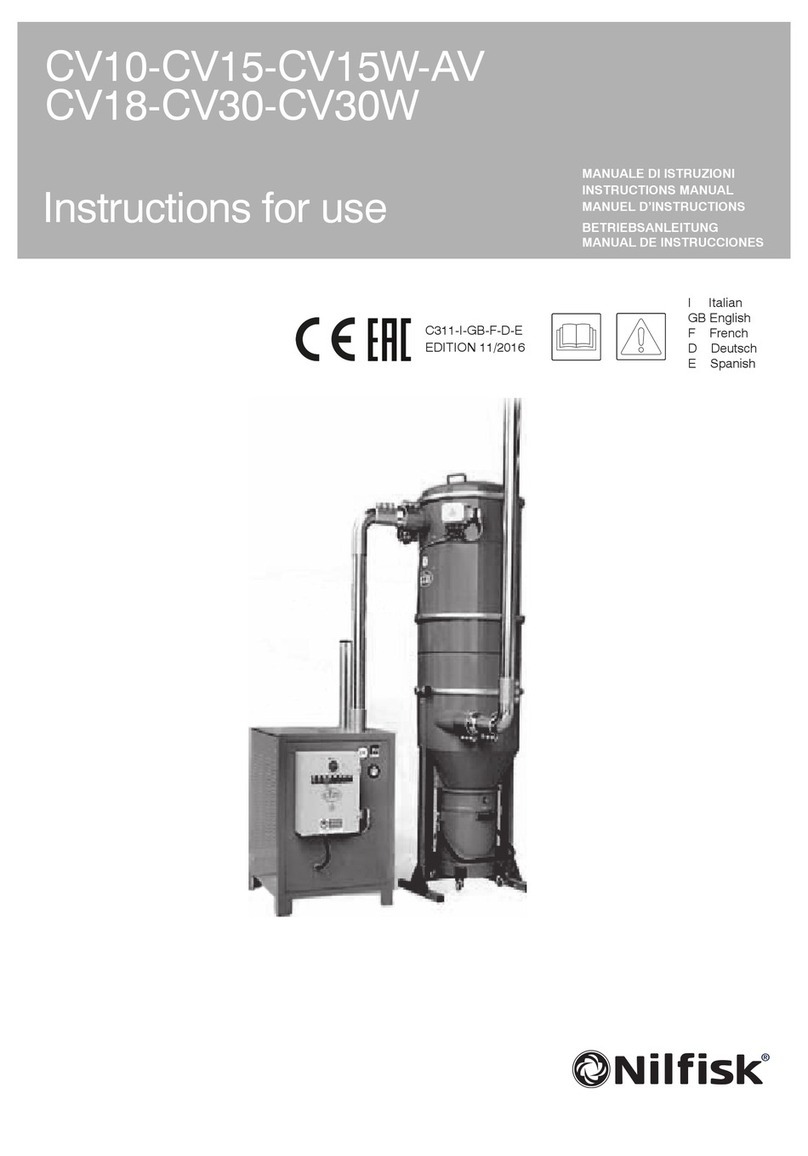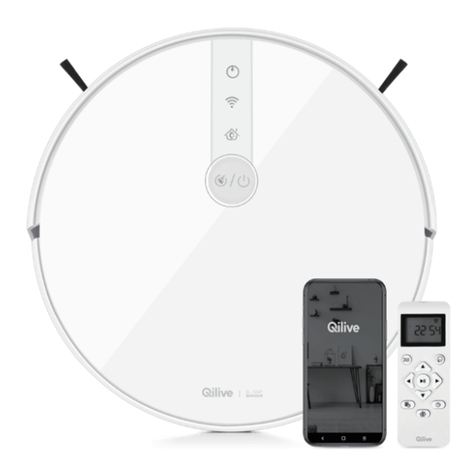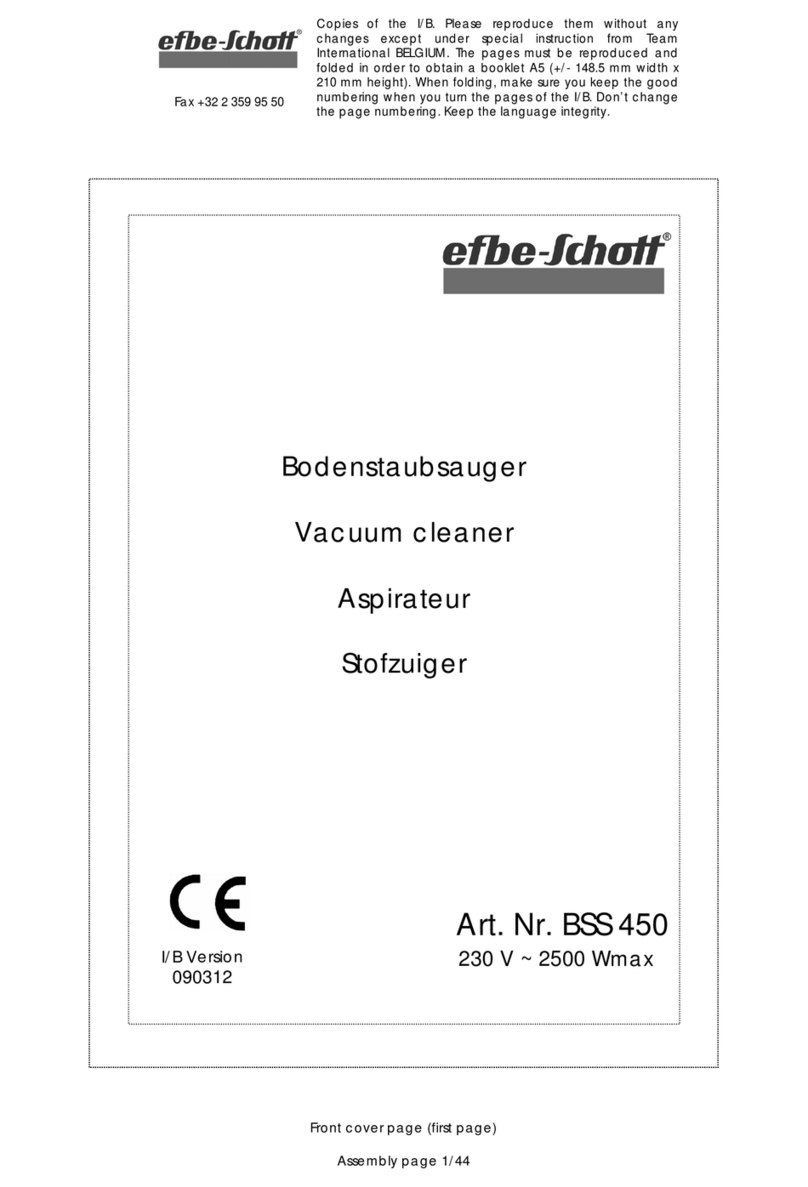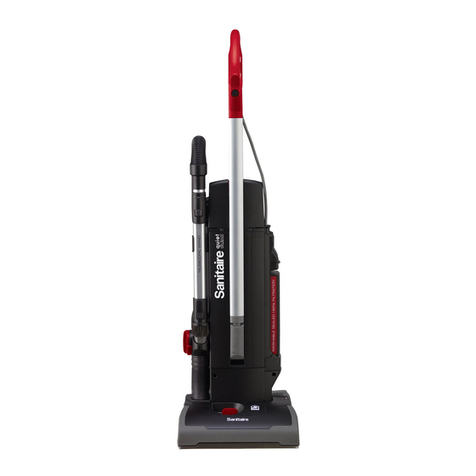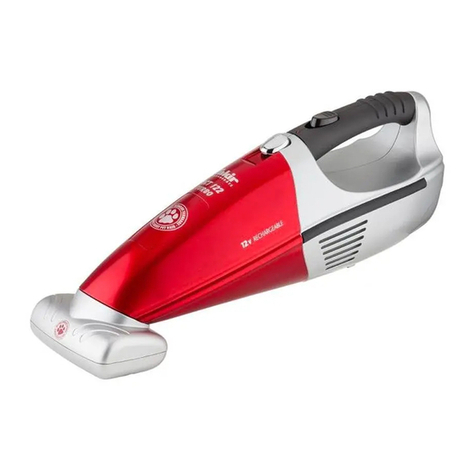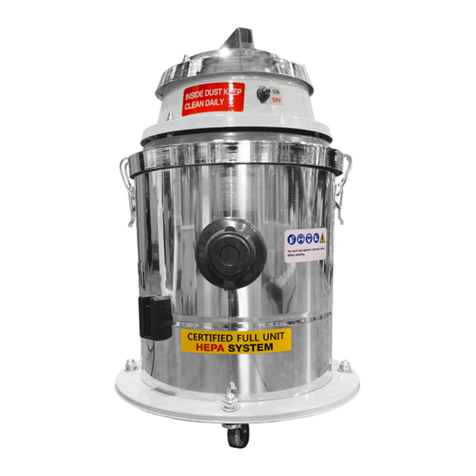Go-On VQ1220SC User manual

Art.-Nr.: 23.423.01 I.-Nr.: 01017
Bedienungsanleitung
Nass- / Trockensauger
Operating Instructions
Wet and Dry Vacuum Cleaner
Mode d’emploi
aspirateur à eau et poussière
Istruzioni per l’uso
Aspiratore a secco / a umido
Instrukcja obsługi
Odkurzacz czyszczący na mokro i sucho
Használati utasítás
nedves- /szárazszívó
QInstrucţiuni de folosire
aspirator uscat-umed
BUpute za uporabu
usisavača za suho i mokro čišćenje
Manual de instruções
do aspirador universal
VQ1220SC
Anleitung_VQ_1220_SC_SPK7:_ 09.07.2008 16:28 Uhr Seite 1

2
2 3
31
2
6
5
4
10
11
19
18
15
12 14 13 16 20
1
8
14
3
12
13
126
7
17
10
11
14
9
Anleitung_VQ_1220_SC_SPK7:_ 09.07.2008 16:28 Uhr Seite 2

3
76
16
15
4 5
14
14
3
7
14
8
14
Anleitung_VQ_1220_SC_SPK7:_ 09.07.2008 16:28 Uhr Seite 3

4
D
Achtung!
Beim Benutzen von Geräten müssen einige
Sicherheitsvorkehrungen eingehalten werden, um
Verletzungen und Schäden zu verhindern. Lesen Sie
diese Bedienungsanleitung deshalb sorgfältig durch.
Bewahren Sie diese gut auf, damit Ihnen die
Informationen jederzeit zur Verfügung stehen. Falls
Sie das Gerät an andere Personen übergeben
sollten, händigen Sie diese Bedienungsanleitung
bitte mit aus.
Wir übernehmen keine Haftung für Unfälle oder
Schäden, die durch Nichtbeachten dieser Anleitung
und den Sicherheitshinweisen entstehen.
1. Sicherheitshinweise
Achtung: Vor der Montage und Inbetriebnahme
die Gebrauchsanweisung unbedingt beachten.
Kontrollieren, ob die Netzspannung auf dem
Typenschild mit der Netzspannung überein-
stimmt.
Nur an ordnungsgemäße Schutzkontaktsteck-
dose 230 Volt, ~ 50 Hz anschließen.
Absicherung min. 16 A.
Netzstecker ziehen wenn: Gerät nicht benützt
wird, bevor Gerät geöffnet wird, vor Reinigung
und Wartung.
Gerät niemals mit Lösungsmitteln reinigen.
Stecker nicht am Kabel aus der Steckdose
ziehen.
Betriebsbereites Gerät nicht unbeaufsichtigt
lassen.
Vor Zugriff von Kindern schützen.
Es ist darauf zu achten, dass die Netzanschluss-
leitung nicht durch Überfahren, Quetschen,
Zerren und dergleichen verletzt oder beschädigt
wird.
Das Gerät darf nicht benutzt werden, falls der
Zustand der Netzanschlussleitung nicht
einwandfrei ist.
Es darf bei Ersatz der Netzanschlussleitung nicht
von den vom Hersteller angegebenen
Ausführungen abgewichen werden.
Netzanschlussleitung: H 05 VV - F 3G 1,5 mm2
Keinesfalls einsaugen: Brennende Streichhölzer,
glimmende Asche und Zigarettenstummel,
brennbare, ätzende, feuergefährliche oder
explosive Stoffe, Dämpfe und Flüssigkeiten.
Dieses Gerät ist nicht für die Absaugung
gesundheitsgefährdender Stäube geeignet.
Gerät in trockenen Räumen aufbewahren.
Kein schadhaftes Gerät in Betrieb nehmen.
Service nur bei autorisierten
Kundendienststellen.
Benützen Sie das Gerät nur für die Arbeiten, für
die es konstruiert wurde.
Bei Reinigung von Treppen, ist höchste
Aufmerksamkeit geboten.
Verwenden Sie nur Original Zubehör- und
Ersatzteile.
2. Gerätebeschreibung und
Lieferumfang
1 Griff
2 Ein- / Aus- / Automatikschalter
3 Gerätekopf
4 Filterkorb
5 Sicherheitsschwimmerventil
6 Automatik-Steckdose für Elektrowerkzeug
7 Verschlußhaken
8 Behälter
9 Anschluß Saugschlauch
10 Blasanschluss
11 Biegsamer Saugschlauch
12 3-teiliges Saugrohr
13 Kombidüse
14 Laufrollen
15 Faltenfilter
16 Schaumstoffilter
17 Haken für Kabelaufwicklung
18 Fugendüse
19 Schmutzfangsack
20 Handgriff mit Fehlluftregler
3. Bestimmungsgemäße Verwendung
Der Nass- Trockensauger ist geeignet zum Nass-
und Trockensaugen unter Verwendung des
entsprechenden Filters. Das Gerät ist nicht bestimmt
zum Aufsaugen von brennbaren, explosiven oder
gesundheitsgefährdenden Stoffen.
Die Maschine darf nur nach ihrer Bestimmung
verwendet werden. Jede weitere darüber
hinausgehende Verwendung ist nicht
bestimmungsgemäß. Für daraus hervorgerufene
Schäden oder Verletzungen aller Art haftet der
Benutzer/Bediener und nicht der Hersteller.
Bitte beachten Sie, dass unsere Geräte
bestimmungsgemäß nicht für den gewerblichen,
handwerklichen oder industriellen Einsatz konstruiert
wurden. Wir übernehmen keine Gewährleistung,
wenn das Gerät in Gewerbe-, Handwerks- oder
Industriebetrieben sowie bei gleichzusetzenden
Tätigkeiten eingesetzt wird.
Anleitung_VQ_1220_SC_SPK7:_ 09.07.2008 16:28 Uhr Seite 4

5
D
4. Technische Daten
Netzspannung: 230V~ 50 Hz
Leistungsaufnahme: 1.250 W
Max. Leistungsaufnahme Automatik-Steckdose:
2.400 W
Max. Leistungsaufnahme Gesamt: 3.650 W
Behältervolumen: 20 l
Gewicht: 5,5 kg
5. Vor Inbetriebnahme
Achtung!
Überzeugen Sie sich vor dem Anschließen, dass
die Daten auf dem Typenschild mit den Netz-
daten übereinstimmen.
Das Gerät darf nur an einer Schutzkontaktsteck-
dose angeschlossen werden!
5.1 Montage Gerät
Montage des Gerätekopfes (Abb. 5/3)
Der Gerätekopf (3) ist mit den Verschlusshaken (7)
am Behälter (8) befestigt. Zum Abnehmen des
Gerätekopfes (3) Verschlusshaken (7) öffnen und
Gerätekopf (3) abnehmen. Bei Montage des
Gerätekopfes (3) auf korrektes einrasten der
Verschlusshaken (7) achten.
Montage der Räder (Abb. 3/14)
Montieren Sie die Räder entsprechend der
Abbildung 4.
5.2 Montage der Filter
Achtung!
Den Nass- Trockensauger niemals ohne Filter
benutzen!
Achten Sie stets auf festen Sitz der Filter!
Montage des Schaumstofffilters (Abb. 6/16)
Zum Nasssaugen ziehen Sie den beiliegenden
Schaumstofffilter (16) über den Filterkorb (Abb.
2/4).Der bei der Lieferung bereits montierte
Faltenfilter (15) ist nicht für das Nasssaugen
geeignet!
Montage des Faltenfilters (Abb. 7/15)
Zum Trockensaugen schieben Sie den Faltenfilter
(Abb. 3/15) auf den Filterkorb (Abb. 2/4). Der
Faltenfilter (15) ist nur für das Trockensaugen
geeignet!
Montage des Schmutzfangsackes
(nicht im Lieferumfang enthalten)
Zum Aufsaugen von feinem, trockenem Schmutz
wird empfohlen zusätzlich den Schmutzfangsack zu
montieren. Dadurch bleibt der Faltenfilter (15) länger
frei und die Saugleistung länger erhalten. Zudem
wird die Entsorgung des Staubes erleichtert.
Ziehen Sie den Schmutzfangsack über die
Ansaugöffnung. Der Schmutzfangsack ist nur für das
Trockensaugen geeignet.
5.3 Montage des Saugschlauches (11)
Verbinden Sie je nach Anwendungsfall den
Saugschlauch (11) mit dem entsprechenden
Anschluss des Nass- / Trockensaugers.
Saugen
Schließen Sie den Saugschlauch (11) am Anschluss
Saugschlauch (9) an
Blasen
Schließen sie den Saugschlauch (11)am
Blasanschluss (10) an
Zur Verlängerung des Saugschlauches (11) können
ein oder mehrere Elemente des 3-teiligen Saugrohrs
(12) am Saugschlauch (11) aufgesteckt werden.
5.4 Saugdüsen
Kombidüse (13)
Die Kombidüse (13) ist zum Absaugen von
Feststoffen und Flüssigkeiten auf mittleren bis
großen Flächen geeignet.
6. Bedienung
6.1 Ein- / Ausschalter (Abb. 2/2)
Schalterstellung 0: Aus
Schalterstellung I: Normalbetrieb
Schalterstellung II: Automatikbetrieb
6.2 Trockensaugen
Verwenden Sie zum Trockensaugen den Faltenfilter
(15) Zusätzlich kann ein Schmutzfangsack montiert
werden. (siehe Punkt 5.2).
Achten Sie stets auf festen Sitz der Filter!
6.3 Nasssaugen
Verwenden Sie zum Nasssaugen den
Schaumstofffilter (16) (siehe Punkt 5.2).
Achten Sie stets auf festen Sitz des Filters!
Anleitung_VQ_1220_SC_SPK7:_ 09.07.2008 16:28 Uhr Seite 5

6
D
Achtung!
Beim Nassaugen schaltet der Nass- / Trockensauger
durch das Sicherheitsschwimmerventil (5)
automatisch bei erreichen des maximalen
Füllstandes ab.
Achtung!
Der Nass- Trockensauger ist nicht für das Aufsaugen
von brennbaren Flüssigkeiten geeignet!
Verwenden Sie zum Nasssaugen nur den
beiliegenden Schaumstofffilter!
6.4 Automatikbetrieb
Schließen Sie das Netzkabel ihres Elektrowerkzeugs
an die Automatik-Steckdose (6) an und Verbinden
Sie den Saugschlauch (11) mit dem
Staubabsauganschluss ihres Elektrowerkzeugs.
Achten Sie auf festen Sitz und luftdichte Verbindung
der Geräte.
Stellen Sie den Schalter (2) des Nass-
Trockensaugers auf Position II, Automatikbetrieb.
Sobald Sie das Elektrowerkzeug einschalten schaltet
sich der Nass- Trockensauger ein. Wenn Sie ihr
Elektrowerkzeug ausschalten schaltet sich der Nass-
Trockensauger mit einer voreingestellten
Verzögerung aus.
6.5 Blasen
Verbinden Sie den Saugschlauch (11) mit dem
Blasanschluss (10) des Nass- Trockensaugers.
7. Reinigung, Wartung und
Ersatzteilbestellung
Achtung!
Ziehen Sie vor allen Reinigungsarbeiten den
Netzstecker.
7.1 Reinigung
Halten Sie Schutzvorrichtungen, Luftschlitze und
Motorengehäuse so staub- und schmutzfrei wie
möglich.
Wir empfehlen, dass Sie das Gerät direkt nach
jeder Benutzung reinigen.
7.2 Reinigung des Gerätekopfes (13)
Reinigen Sie das Gerät regelmäßig mit einem
feuchten Tuch und etwas Schmierseife. Verwenden
Sie keine Reinigungs- oder Lösungsmittel; diese
könnten die Kunststoffteile des Gerätes angreifen.
7.3 Reinigung des Behälters (8)
Der Behälter kann, je nach Verschmutzung mit
einem feuchten Tuch und etwas Schmierseife oder
unter fließendem Wasser gereinigt werden.
7.4 Reinigung der Filter
Reinigung des Faltenfilters (15)
Reinigen Sie den Faltenfilter (15) regelmäßig indem
Sie ihn vorsichtig abklopfen und mit einer feinen
Bürste oder einem Handfeger säubern.
Reinigung des Schaumstofffilters (16)
Reinigen Sie den Schaumstofffilter (16) mit etwas
Schmierseife unter fließendem Wasser und lassen
Sie ihn an der Luft trocknen.
7.5 Wartung
Kontrollieren Sie die Filter des Nass- Trocken-
saugers regelmäßig und vor jeder Anwendung auf
festen Sitz.
7.6. Ersatzteilbestellung
Bei der Ersatzteilbestellung sollten folgende
Angaben gemacht werden:
Typ des Gerätes
Artikelnummer des Gerätes
Ident- Nummer des Gerätes
Ersatzteil- Nummer des erforderlichen Ersatzteils
Aktuelle Preise und Infos finden Sie unter
www.isc-gmbh.info
8. Entsorgung und Wiederverwertung
Das Gerät befindet sich in einer Verpackung um
Transportschäden zu verhindern. Diese Verpackung
ist Rohstoff und ist somit wieder verwendbar oder
kann dem Rohstoffkreislauf zurückgeführt werden.
Das Gerät und dessen Zubehör bestehen aus
verschiedenen Materialien, wie z.B. Metall und
Kunststoffe. Führen Sie defekte Bauteile der
Sondermüllentsorgung zu. Fragen Sie im
Fachgeschäft oder in der Gemeindeverwaltung nach!
Anleitung_VQ_1220_SC_SPK7:_ 09.07.2008 16:28 Uhr Seite 6

Important!
When using equipment, a few safety precautions
must be observed to avoid injuries and damage.
Please read the complete operating manual with due
care. Keep this manual in a safe place, so that the
information is available at all times. If you give the
equipment to any other person, give them these
operating instructions as well.
We accept no liability for damage or accidents which
arise due to non-observance of these instructions
and the safety information.
1. Safety information
Important: Read the operating instructions before
assembling and using the appliance for the first
time.
Check that the mains voltage is the same as the
mains voltage specified on the rating plate.
Only connect the appliance to a properly fitted
230 V, ~ 50 Hz shock-proof socket.
Minimum 16 A fuse.
Pull out the power plug in the following
circumstances: Whenever the appliance is not in
use, before opening the appliance and before all
cleaning and maintenance work.
Never clean the appliance with solvents.
Never pull the plug out of the socket by pulling the
cable.
Never leave the appliance unattended when
operational.
Keep away from children.
Take care to ensure that the power cable does
not get damaged by being run over, crushed,
pulled or suchlike.
Do not use the machine if the power cable is in a
less than perfect condition.
If the power cable has to be replaced, the
replacement must comply with the design
specifications of the manufacturer. Power cable:
H 05 VV - F 3G 1,5 mm2
Never vacuum the following: Burning matches,
smoldering ash and cigarette butts, combustible,
caustic, inflammable or explosive substances,
vapor or liquids.
This appliance is not suitable for vacuuming dust
which can be harmful to health.
Store the appliance in a dry indoor location.
Never use the appliance if it is damaged.
Only allow the appliance to be serviced by an
authorized after sales service outlet.
Only use the appliance to carry out work for which
has been designed.
Take extra care when cleaning steps.
Use only genuine accessories and spare parts.
2. Layout and items supplied
1 Handle
2 ON/OFF/Automatic switch
3 Appliance head
4 Filter basket
5 Safety float valve
6 Automatic socket-outlet for electric tools
7 Locking hook
8 Container
9 Suction hose connector
10 Blow connector
11 Flexible hose
12 3-part suction tube
13 Dual-purpose nozzle
14 Rollers
15 Pleated filter
16 Foamed plastic filter
17 Hook for cable storage
18 Crevice nozzle
19 Dirt bag
20 Handle with air regulator
3. Intended use
The wet and dry vacuum cleaner is designed for wet
and dry vacuuming using the appropriate filter. The
appliance is not suitable for the vacuuming of
combustible, explosive or harmful substances.
The machine is to be used only for its prescribed
purpose. Any other use is deemed to be a case of
misuse. The user / operator and not the manufacturer
will be liable for any damage or injuries of any kind
caused as a result of this.
Please note that our equipment has not been
designed for use in commercial, trade or industrial
applications. Our warranty will be voided if the
machine is used in commercial, trade or industrial
businesses or for equivalent purposes.
4. Technical data
Mains voltage: 230 V ~ 50 Hz
Power input: 1,250 watts
Max. power consumption of the automatic socket-
outlet: 2,400 watts
Max. total power consumption: 3,650 watts
Container volume: 20 l
Weight: 5.5 kg
7
GB
Anleitung_VQ_1220_SC_SPK7:_ 09.07.2008 16:28 Uhr Seite 7

5. Before starting
Important!
Before you connect the appliance to the mains
supply make sure that the data on the rating plate
are identical to the mains data.
The appliance may only be connected to a shock-
proof socket.
5.1 Assembling the appliance
Fitting the appliance head (Fig. 5/3)
The appliance head (3) is fastened to the container
(8) by the locking hook (7). To remove the appliance
head (3), open the locking hook (7) and remove the
appliance head (3). When fitting the appliance head
(3), make sure that the locking hook (7) locks into
place correctly.
Fitting the wheels (Fig. 3/14)
Fit the wheels in accordance with Fig. 4.
5.2 Fitting the filter
Important!
Never use the wet and dry vacuum cleaner without a
filter.
Check that the filter is securely fitted at all times.
Fitting the foam filter (Fig. 6/16)
For wet vacuuming, slip the supplied foam filter (16)
over the filter basket (Fig. 2/4). The pleated filter (15)
already fitted upon delivery is not suitable for wet
vacuuming.
Fitting the pleated filter (Fig. 7/15)
For dry-vacuuming, slip the pleated filter (Fig. 3/15)
over the filter basket (Fig. 2/4). The pleated filter (15)
is suitable for dry-vacuuming only.
Fitting the dirt bag
(not supplied)
For vacuuming fine, dry dirt it is recommended that
you also fit the dirt bag. This will ensure that the
pleated filter (15) does not fill up so quickly and
therefore help the vacuuming power last longer. In
addition, it makes it easier to dispose of the dust. Slip
the dirt bag over the vacuuming hole. The dirt bag is
suitable for dry-vacuuming only.
5.3 Fitting the suction hose (11)
Connect the suction hose (11) to the corresponding
connector on the wet and dry vacuum cleaner,
depending on the application required.
Vacuuming
Connect the suction hose (11) to the suction hose
connector (9).
Blowing
Connect the suction hose (11) to the blow connector
(10).
To extend the suction hose (11) you can attach one
or more of the elements which make up the 3-part
suction tube (12) to the suction hose (11).
5.4 Suction nozzles
Dual-purpose nozzle (13)
The dual-purpose nozzle (13) is for vacuuming solids
and liquids over medium to large areas.
6. Operation
6.1 ON/OFF switch (Fig. 2/2)
Switch position 0: Off
Switch position I: Normal operation
Switch position II: Automatic mode
6.2. Dry vacuuming
For dry-vacuuming, use the pleated filter (15). In
addition, you can also fit the dirt bag. (see point 5.2)
Check that the filter is securely fitted at all times.
6.3 Wet vacuuming
For wet-vacuuming, use the foam filter (16) (see point
5.2).
Check that the filter is securely fitted at all times.
Important!
When wet vacuuming, the floating safety switch (5)
turns off the wet and dry vacuum cleaner
automatically when the maximum level is reached.
Important!
The wet and dry vacuum cleaner is not suitable for
the vacuuming of combustible liquids.
For wet vacuuming, use only the supplied foam filter.
6.4 Automatic mode
Connect the power cable on your electric tool to the
automatic socket-outlet (6) and connect the suction
hose (11) to the extractor connector on your electric
tool. Check that the connections are secure and air-
tight.
Set the switch (2) on the wet and dry vacuum cleaner
to position II, automatic mode. The moment you
8
GB
Anleitung_VQ_1220_SC_SPK7:_ 09.07.2008 16:28 Uhr Seite 8

switch on the electric tool, the wet and dry vacuum
cleaner switches on as well. When you switch off the
electric tool, the wet and dry vacuum cleaner
switches off as well after a pre-set delay.
6.5 Blowing
Connect the suction hose (11) to the blow connector
(10) on the wet and dry vacuum cleaner.
7. Cleaning, maintenance and ordering
of spare parts
Important!
Always pull out the mains power plug before starting
any cleaning work.
7.1 Cleaning
Keep all safety devices, air vents and the motor
housing free of dirt and dust as far as possible.
We recommend that you clean the appliance
immediately after you use it.
7.2 Cleaning the appliance head (13)
Clean the appliance regularly with a damp cloth and
some soft soap. Do not use cleaning agents or
solvents; these may be aggressive to the plastic parts
in the appliance.
7.3 Cleaning the container (8)
The container can be cleaned with a damp cloth and
some soft soap or under running water, depending on
the amount of dirt.
7.4 Cleaning the filters
Cleaning the pleated filter (15)
Clean the pleated filter (15) regularly by carefully
patting it and cleaning it with a fine brush or hand
brush.
Cleaning the foam filter (16)
Clean the foam filter (16) with a little soft soap under
running water and allow it to air-dry.
7.5 Maintenance
At regular intervals and before each use, check that
the filters in the wet and dry vacuum cleaner are
securely fitted.
7.6 Ordering replacement parts
Please quote the following data when ordering
replacement parts:
앬Type of machine
앬Article number of the machine
앬Identification number of the machine
앬Replacement part number of the part required
For our latest prices and information please go to
www.isc-gmbh.info
8. Disposal and recycling
The unit is supplied in packaging to prevent its being
damaged in transit. This packaging is raw material
and can therefore be reused or can be returned to
the raw material system.
The unit and its accessories are made of various
types of material, such as metal and plastic.
Defective components must be disposed of as
special waste. Ask your dealer or your local council.
9
GB
Anleitung_VQ_1220_SC_SPK7:_ 09.07.2008 16:28 Uhr Seite 9

Attention !
Lors de lʼutilisation dʼappareils, il faut respecter
certaines mesures de sécurité afin dʼéviter des
blessures et dommages. Veuillez donc lire
attentivement ce mode dʼemploi. Conservez-le bien
de façon à pouvoir disposer à tout moment de ces
informations. Si lʼappareil doit être remis à dʼautres
personnes, remettez-leur aussi ce mode dʼemploi.
Nous déclinons toute responsabilité pour les
accidents et dommages dus au non-respect de ce
mode dʼemploi et des consignes de sécurité.
1. Consignes de sécurité
Attention : avant le montage et la mise en service,
respectez absolument le mode d’emploi.
Contrôlez que la tension secteur figurant sur la
plaque d’identification correspond à la tension
secteur.
Branchez l’appareil uniquement sur des prises de
courant de sécurité conformes aux spécifications
230 Volt, ~ 50 Hz.
Fusible mini. 16A.
Débranchez la prise secteur : lorsque vous
n’utilisez pas l’appareil, avant d’ouvrir l’appareil,
avant le nettoyage et l’entretien.
Ne nettoyez jamais l’appareil avec des solvants.
Ne retirez pas la fiche de la prise en la tirant par
le câble.
Ne laissez pas l’appareil sans surveillance.
Interdire l’accès aux enfants.
Il faut veiller à ne pas abîmer ni endommager la
ligne de raccordement secteur en roulant dessus,
en l’écrasant, en la tirant ou par d’autres actions
du même genre.
L’appareil ne doit pas être utilisé si l’état de la
ligne de raccordement réseau n’est pas
impeccable.
Lors du remplacement de la ligne de
raccordement secteur, il ne faut pas s’écarter des
modèles indiqués par le producteur. Ligne de
raccordement réseau : H 05 VV - F 3G 1,5 mm2.
N’aspirez jamais : d’allumettes brûlantes, de
cendres ni de mégots en combustion, de
matériaux, vapeurs ou liquides combustibles,
corrosifs ou explosifs.
Cet appareil n’est pas fait pour aspirer des
poussières nocives pour la santé.
Conservez l’appareil à un endroit sec.
Ne mettez pas en service un appareil
endommagé.
Service après-vente uniquement dans nos postes
service après-vente autorisés.
Utilisez uniquement l’appareil pour les travaux
pour lesquels il a été construit.
Lorsque vous nettoyez des escaliers, la plus
grande prudence est de mise.
Utilisez exclusivement des accessoires et pièces
détachées d’origine.
2. Description de l’appareil et étendue
de la livraison
1 Poignée
2 Interrupteur automatique / marche / arrêt
3 Tête de l’appareil
4 Cage filtrante
5 Soupape de sécurité à flotteur
6 Prise automatique pour outils électriques
7 Crochets de fermeture
8 Réservoir
9 Raccord du tuyau d’aspiration
10 Raccord de soufflerie
11 Tuyau d’aspiration flexible
12 Tube d’aspiration à 3 pièces
13 Buse combinée
14 Galets de roulement
15 Filtre à plis
16 Filtre mousse
17 Crochet pour enroulement de câble
18 Buse à joints
19 Filtres collecteurs dʼimpuretés
20 Poignée à régulateur dʼair manquant
3. Utilisation conforme à l’affectation
L’aspirateur à eau et poussière est adapté pour
aspirer de l’eau et de la poussière en utilisant le filtre
correspondant. L’appareil n’est pas conçu pour
aspirer des substances combustibles, explosives ni
dangereuses pour la santé.
La machine doit exclusivement être employée
conformément à son affectation. Chaque utilisation
allant au-delà de cette affectation est considérée
comme non conforme. Pour les dommages en
résultant ou les blessures de tout genre, le
producteur décline toute responsabilité et
l’opérateur/l’exploitant est responsable.
Veillez au fait que nos appareils, conformément à
leur affectation, nʼont pas été construits, pour être
utilisés dans un environnement professionnel,
industriel ou artisanal. Nous déclinons toute
responsabilité si lʼappareil est utilisé
professionnellement, artisanalement ou dans des
10
F
Anleitung_VQ_1220_SC_SPK7:_ 09.07.2008 16:28 Uhr Seite 10

sociétés industrielles, tout comme pour toute activité
équivalente.
4. Caractéristiques techniques
Tension réseau : 230V~50 Hz
Puissance absorbée : 1 250 W
Puissance absorbée maxi. prise automatique :
2 400 W
Puissance absorbée maxi. total : 3 650 W
Volume du réservoir : 20 l
Poids : 5,5 kg
5. Avant la mise en service
Attention !
Assurez-vous, avant de connecter la machine,
que les données se trouvant sur la plaque de
signalisation correspondent bien aux données du
réseau.
L’appareil doit uniquement être raccordé à une
prise de courant de sécurité !
5.1 Montage de l’appareil
Montage de la tête de l’appareil (fig. 5/3)
La tête de l’appareil (3) est fixée sur le réservoir (8)
avec un crochet de fermeture (7). Pour retirer la tête
de l’appareil (3), ouvrez le crochet de fermeture (7) et
enlevez la tête de l’appareil (3). Lors du montage de
la tête d’appareil (3), veillez à ce que le crochet de
fermeture (7) s’encrante correctement.
Montage des roues (fig. 3/14)
Montez les roues conformément à la figure 4.
5.2 Montage des filtres
Attention !
Ne jamais utiliser l’aspirateur à eau et poussière sans
filtre ! Veillez toujours à la bonne fixation du filtre !
Montage du filtre en mousse (fig. 6/16)
Pour aspirer de l’eau, tirez le filtre en mousse (16)
joint au-dessus de la cage filtrante (fig. 2/4). Le filtre à
plis (15) déjà monté au moment de la livraison n’est
pas fait pour aspirer de l’eau !
Montage du filtre à plis (fig. 7/15)
Pour aspirer à sec, poussez le filtre à plis (fig. 3/15)
sur la cage filtrante (fig. 2/4). Le filtre à plis (15)
convient uniquement à l’aspiration de la poussière !
Montage du sac collecteur d’impuretés
(non compris dans la livraison)
Pour aspirer de la saleté fine et sèche, il est conseillé
de monter en plus un sac collecteur d’impuretés. Le
filtre à plis (15) restera plus longtemps exempt de
saleté et la puissance d’aspiration sera conservée.
De plus, la récupération de la poussière est facilitée.
Tirez le sac collecteur d’impuretés au-dessus de la
bouche d’aspiration. Le sac collecteur d’impuretés
convient uniquement à l’aspiration à de la poussière.
5.3 Montage du tuyau d’aspiration (11)
Raccordez en fonction du cas d’application le tuyau
d’aspiration (11) avec le raccord correspondant de
l’aspirateur à eau et poussière.
Aspirer
Raccordez le tuyau d’aspiration (11) au niveau du
raccord du tuyau d’aspiration (9).
Souffler
Raccordez le tuyau d’aspiration (11) au niveau du
raccord de soufflerie (10).
Pour prolonger le tuyau d’aspiration (11), on peut
monter un ou plusieurs éléments du tube d’aspiration
à 3 pièces (12) sur le tuyau d’aspiration (11).
5.4 Buse d’aspiration
Buse combinée (13)
La buse combinée (13) convient à aspirer des
substances solides et des liquides sur des surfaces
moyennes à grandes.
6. Commande
6.1 Interrupteur marche / arrêt (fig. 2/2)
Position de l’interrupteur 0: Arrêt
Position de l’interrupteur I : Fonctionnement normal
Position de l’interrupteur II : Mode automatique
6.2 Aspirer à sec
Utilisez le filtre à plis (15) pour aspirer à sec. On peut
monter en plus un sac collecteur d’impuretés. (Cf.
point 5.2).
Veillez toujours à la bonne fixation du filtre !
6.3 Aspirer de l’eau
Utilisation le filtre en mousse (16) pour aspirer de
l’eau (cf. point 5.2).
Veillez toujours à la bonne fixation du filtre !
11
F
Anleitung_VQ_1220_SC_SPK7:_ 09.07.2008 16:28 Uhr Seite 11

Attention !
Lorsque vous aspirez de l’eau, l’aspirateur d’eau et
de poussière se met automatiquement hors service
par le biais de la soupape de sécurité à flotteur (5)
quand le niveau de remplissage maximal est atteint.
Attention !
L’aspirateur à eau et poussière n’est pas fait pour
aspirer des liquides inflammables !
Utilisez uniquement le filtre en mousse fourni pour
aspirer de l’eau !
6.4 Mode automatique
Raccordez le câble secteur de votre outil électrique à
la prise de courant automatique (6) et reliez le tuyau
d’aspiration (11) au raccord d’aspiration de poussière
de votre outil électrique. Veillez à la bonne fixation et
au raccord hermétique à l’air des appareils.
Mettez l’interrupteur (2) de l’aspirateur à eau et
poussière sur la position II, mode automatique. Dès
que vous mettez l’outil électrique en circuit,
l’aspirateur à eau et poussière s’allume. Lorsque vous
mettez votre outil électrique hors circuit, l’aspirateur à
eau et poussière s’éteint avec un retard préréglé.
6.5 Souffler
Raccordez le tuyau d’aspiration (11) avec le raccord
de soufflerie (10) de l’aspirateur à eau et poussière.
7. Nettoyage, maintenance et
commande de pièces de rechange
Attention !
Retirez la fiche de contact avant tous travaux de
nettoyage.
7.1 Nettoyage
Maintenez les dispositifs de protection, les fentes
à air et le carter de moteur aussi propres (sans
poussière) que possible.
Nous recommandons de nettoyer l’appareil
directement après chaque utilisation.
7.2 Nettoyage de la tête d’appareil (13)
Nettoyez l’appareil régulièrement à l’aide d’un chiffon
humide et un peu de savon. N’utilisez aucun produit
de nettoyage ni détergent ; ils pourraient
endommager les pièces en matières plastiques de
l’appareil.
7.3 Nettoyage du réservoir (8)
Le réservoir peut être nettoyé, en fonction du degré
d’encrassement, avec un chiffon humide et un peu de
savon noir ou sous l’eau courante.
7.4 Nettoyage des filtres
Nettoyage du filtre à plis (15)
Nettoyez régulièrement le filtre à plis (15) en le
tapotant précautionneusement et en le nettoyant à
l’aide d’une brosse fine ou d’une balayette.
Nettoyage du filtre en mousse (16)
Nettoyer le filtre en mousse (16) avec un peu de
savon noir sous l’eau courante et laissez-le sécher à
l‘air.
7.5 Maintenance
Contrôlez régulièrement la bonne fixation du filtre de
l’aspirateur à eau et poussière et avant chaque
application.
7.6 Commande de pièces de rechange
Pour les commandes de pièces de rechange,
veuillez indiquer les références suivantes:
앬Type de lʼappareil
앬No. dʼarticle de lʼappareil
앬No. dʼidentification de lʼappareil
앬No. de pièce de rechange de la pièce requise
Vous trouverez les prix et informations actuelles à
lʼadresse www.isc-gmbh.info
8. Mise au rebut et recyclage
Lʼappareil se trouve dans un emballage permettant
dʼéviter les dommages dus au transport. Cet
emballage est une matière première et peut donc
être réutilisé ultérieurement ou être réintroduit dans
le circuit des matières premières.
Lʼappareil et ses accessoires sont en matériaux
divers, comme par ex. des métaux et matières
plastiques. Eliminez les composants défectueux
dans les systèmes dʼélimination des déchets
spéciaux. Renseignez-vous dans un commerce
spécialisé ou auprès de lʼadministration de votre
commune !
12
F
Anleitung_VQ_1220_SC_SPK7:_ 09.07.2008 16:28 Uhr Seite 12

Attenzione!
Nellʼusare gli apparecchi si devono rispettare diverse
avvertenze di sicurezza per evitare lesioni e danni.
Quindi leggete attentamente queste istruzioni per
lʼuso. Conservatele bene per avere a disposizione le
informazioni in qualsiasi momento. Se date
lʼapparecchio ad altre persone consegnate loro
queste istruzioni per lʼuso insieme allʼapparecchio!
Non ci assumiamo alcuna responsabilità per incidenti
o danni causati dal mancato rispetto di queste
istruzioni e delle avvertenze di sicurezza.
1. Avvertenze di sicurezza
Attenzione: prima del montaggio e della messa in
esercizio osservate assolutamente le istruzioni
per l’uso.
Controllate che la tensione di rete indicata sulla
targhetta corrisponda alla tensione di rete a
disposizione.
Collegate l’apparecchio solo ad una regolare
presa con messa a terra da 230 Volt, ~ 50 Hz.
Protezione di almeno 16 A.
Staccate la spina dalla presa di corrente: quando
l’apparecchio non viene usato, prima di aprire
l’apparecchio, prima della pulizia e della
manutenzione.
Non pulite mai l’apparecchio con solventi.
Non staccate la spina dalla presa di corrente
tirando il cavo.
Non lasciate l’apparecchio incustodito.
Tenete lontani bambini.
Fate attenzione che il cavo di alimentazione non
venga rovinato o danneggiato passandoci sopra,
schiacciandolo, tirandolo o trattandolo in modo
simile.
L’apparecchio non deve venire usato se il cavo di
alimentazione non è in perfetto stato.
In caso di sostituzione del cavo di alimentazione
non dovete allontanarvi dalle versioni indicate dal
produttore. Cavo di alimentazione:
H 05 VV - F 3G 1,5 mm2.
Non aspirate in nessun caso: fiammiferi accesi o
ancora incandescenti, ceneri e mozziconi di
sigarette che non siano spenti, sostanze, vapori e
liquidi infiammabili, caustici o esplosivi.
Questo apparecchio non è adatto all’aspirazione
di polveri nocive alla salute.
Conservate l’apparecchio in luoghi asciutti.
Non mettete in funzione l’apparecchio se è
difettoso.
Assistenza solo presso centri di servizio
assistenza autorizzati.
Utilizzate l’apparecchio solo per i lavori per i quali
è stato costruito.
Nella pulizia di scale occorre essere
estremamente attenti.
Usate solamente accessori e ricambi originali.
2. Descrizione dell’apparecchio ed
elementi forniti
1 Impugnatura
2 Interruttore acceso/spento/automatico
3 Testa dell’apparecchio
4 Cestello filtro
5 Valvola di sicurezza a galleggiante
6 Presa automatica per utensili elettrici
7 Gancio di chiusura
8 Contenitore
9 Attacco tubo di aspirazione
10 Attacco di soffiaggio
11 Tubo flessibile di aspirazione
12 Tubo di aspirazione a 3 elementi
13 Bocchetta combinata
14 Rotelle
15 Filtro pieghettato
16 Filtro di gommapiuma
17 Gancio avvolgicavo
18 Bocchetta tergifughe
19 Sacchetto di raccolta dello sporco
20 Impugnatura con apertura di regolazione
dellʼaria
3. Utilizzo proprio
L’aspiratore a secco / a umido è adatto per
l’aspirazione a secco / a umido utilizzando il rispettivo
filtro. L’apparecchio non è destinato all’aspirazione di
sostanze infiammabili, esplosive o dannose per la
salute.
L’apparecchio deve venire usato solamente per lo
scopo a cui è destinato. Ogni altro tipo di uso che
esuli da quello previsto non è un uso conforme.
L’utilizzatore/l’operatore, e non il costruttore, è
responsabile dei danni e delle lesioni di ogni tipo che
ne risultino.
Tenete presente che i nostri apparecchi non sono
stati costruiti per lʼimpiego professionale, artigianale
o industriale. Non ci assumiamo alcuna garanzia
quando lʼapparecchio viene usato in imprese
commerciali, artigianali o industriali, o in attività
equivalenti.
13
I
Anleitung_VQ_1220_SC_SPK7:_ 09.07.2008 16:28 Uhr Seite 13

4. Caratteristiche tecniche
Tensione di rete: 230 V ~ 50 Hz
Potenza assorbita: 1.250 W
Max. potenza assorbita dalla presa di corrente
automatica 2.400 W
Max. potenza assorbita totale 3.650 W
Capienza del recipiente: 20 l
Peso: 5,5 kg
5. Prima della messa in esercizio
Attenzione!
Prima di inserire la spina nella presa di corrente
assicuratevi che i dati sulla targhetta di
identificazione corrispondano a quelli di rete.
L’apparecchio deve essere collegato solo ad una
presa con messa a terra!
5.1 Montaggio dell’apparecchio
Montaggio della testa dell’apparecchio (Fig. 5/3)
La testa dell’apparecchio (3) è fissata al contenitore
(8) dal gancio di chiusura (7). Per togliere la testa
dell’apparecchio (3), aprite il gancio di chiusura (7) e
togliete la testa dell’apparecchio (3). Nel montare la
testa dell’apparecchio (3) badate che il gancio di
chiusura (7) scatti correttamente.
Montaggio delle ruote (Fig. 3/14)
Montate le ruote come mostrato nella Fig. 4.
5.2 Montaggio del filtro
Attenzione!
Non usate mai l’aspiratore a secco / a umido senza
filtro! Controllate sempre che il filtro sia ben fissato!
Montaggio del filtro di gommapiuma (Fig. 6/16)
Per l’aspirazione a umido infilate il filtro di
gommapiuma accluso (16) sopra il cestello del filtro
(Fig. 2/4). Il filtro pieghettato (15), già montato alla
consegna, non è adatto per l’aspirazione a umido!
Montaggio del filtro pieghettato (Fig. 7/15)
Per l’aspirazione a secco spingete il filtro pieghettato
(Fig. 3/15) sul cestello del filtro (Fig. 2/4). Il filtro
pieghettato (15) è adatto solo per l’aspirazione a
secco!
Montaggio del sacco di raccolta dello sporco
(non compreso nella fornitura)
Per l’aspirazione di sporco fine e secco si consiglia di
montare anche il sacco di raccolta dello sporco. In tal
modo il filtro pieghettato (15) rimane libero più a lungo
e la potenza aspirante è mantenuta più a lungo.
Inoltre si facilita lo smaltimento della polvere. Infilate il
sacco di raccolta dello sporco sopra l’apertura
d’aspirazione. Il sacco di raccolta dello sporco è
adatto solo per l’aspirazione a secco.
5.3 Montaggio del tubo flessibile di aspirazione
(11)
A seconda dello scopo di utilizzo, collegate il tubo
flessibile di aspirazione (11) con l’attacco
dell’aspiratore a secco / a umido.
Aspirazione
Inserite il tubo flessibile di aspirazione (11)
nell’attacco del tubo di aspirazione (9).
Soffiaggio
Inserite il tubo flessibile di aspirazione (11)
nell’attacco del tubo di soffiaggio (10).
Per prolungare il tubo flessibile di aspirazione (11)
potete applicare uno o più dei 3 elementi del tubo di
aspirazione (12) al tubo flessibile di aspirazione (11).
5.4 Bocchette di aspirazione
Bocchetta combinata (13)
La bocchetta combinata (13) è adatta all’aspirazione
di solidi e liquidi su superfici da medie a grandi.
6. Uso
6.1 Interruttore ON/OFF (Fig. 2/2)
Posizione “0” dell’interruttore: Spento
Posizione “I” dell’interruttore: Esercizio normale
Posizione “II” dell’interruttore: Esercizio automatico
6.2 Aspirazione a secco
Per l’aspirazione a secco usate il filtro pieghettato
(15). Potete inoltre montare un sacco di raccolta dello
sporco (vedi punto 5.2).
Controllate sempre che il filtro sia ben fissato!
6.3 Aspirazione a umido
Per l’aspirazione ad umido impiegate il filtro di
gommapiuma (16) accluso (vedi punto 5.2).
Controllate sempre che il filtro sia ben fissato!
14
I
Anleitung_VQ_1220_SC_SPK7:_ 09.07.2008 16:28 Uhr Seite 14

Attenzione!
Nell’aspirazione a umido l’aspiratore a secco / a
umido viene spento automaticamente dalla valvola di
sicurezza a galleggiante (5) al raggiungimento del
livello massimo di riempimento.
Attenzione!
L’aspiratore a secco / a umido non è adatto
all’aspirazione di liquidi infiammabili!
Per l’aspirazione di liquidi impiegate solo il filtro di
gommapiuma accluso!
6.4 Esercizio automatico
Inserite il cavo di alimentazione dell’elettroutensile
nella presa di corrente automatica (6) e collegate il
tubo flessibile di aspirazione (11) con l’attacco di
aspirazione della polvere dell’elettroutensile.
Controllate che gli apparecchi siano fissati bene ed
ermeticamente.
Posizionate l’interruttore (2) dell’aspiratore a secco / a
umido sulla posizione “II”, esercizio automatico.
Appena accendete l’elettroutensile si accende
l’aspiratore a secco / a umido. Quando spegnete
l’elettroutensile l’aspiratore a secco / a umido si
spegne con un ritardo preimpostato.
6.5 Soffiaggio
Collegate il tubo flessibile di aspirazione (11) con
l’attacco di soffiaggio (10) dell’aspiratore a secco / a
umido.
7. Pulizia, manutenzione e ordinazione
dei pezzi di ricambio
Attenzione!
Prima di qualsiasi lavoro di pulizia staccate la spina
dalla presa di corrente.
7.1 Pulizia
Tenete il più possibile i dispositivi di protezione,
le fessure di aerazione e la carcassa del motore
liberi da polvere e sporco.
Consigliamo di pulire l’apparecchio subito dopo
averlo usato.
7.2 Pulizia della testa dell’apparecchio (13)
Pulite l’apparecchio regolarmente con un panno
asciutto ed un po’ di sapone. Non usate detergenti o
solventi perché questi ultimi potrebbero danneggiare
le parti in plastica dell’apparecchio.
7.3 Pulizia del contenitore (8)
A seconda del tipo di sporco potete pulire il
contenitore con un panno umido ed un po’ di sapone,
oppure sotto acqua corrente.
7.4 Pulizia del filtro
Pulizia del filtro pieghettato (15)
Pulite regolarmente il filtro pieghettato (15) battendolo
delicatamente e passandolo con una spazzola fine o
con uno scopino.
Pulizia del filtro di gommapiuma (16)
Pulite il filtro di gommapiuma (16) con un po’ di
sapone sotto acqua corrente e lasciatelo asciugare
all’aria.
7.5 Manutenzione
Controllate regolarmente e prima di ogni utilizzo che il
filtro dell’aspiratore a secco / a umido sia ben fissato.
7.6 Commissione dei pezzi di ricambio
Volendo commissionare dei pezzi di ricambio, si
dovrebbe dichiarare quanto segue:
앬modello dellʼapparecchio
앬numero dellʼarticolo dellʼapparecchio
앬numero dʼident. dellʼapparecchio
앬numero del pezzo di ricambio del ricambio
necessitato.
Per i prezzi e le informazioni attuali si veda www.isc-
gmbh.info
8. Smaltimento e riciclaggio
Lʼapparecchio si trova in una confezione per evitare i
danni dovuti al trasporto. Questo imballaggio
rappresenta una materia prima e può perciò essere
utilizzato di nuovo o riciclato.
Lʼapparecchio e i suoi accessori sono fatti di
materiali diversi, per es. metallo e plastica.
Consegnate i pezzi difettosi allo smaltimento di rifiuti
speciali. Per informazioni rivolgetevi ad un negozio
specializzato o allʼamministrazione comunale!
15
I
Anleitung_VQ_1220_SC_SPK7:_ 09.07.2008 16:28 Uhr Seite 15

Uwaga!
Podczas użytkowania urządzenia należy
przestrzegać wskazówek bezpieczeństwa w celu
uniknięcia zranień i uszkodzeń. Z tego względu
proszę dokładnie zapoznać się z instrukcją obsługi.
Proszę zachować instrukcję i wskazówki, aby można
było w każdym momencie do nich wrócić. W razie
przekazania urządzenia innej osobie, proszę wręczyć
jej również instrukcję obsługi.
Nie odpowiadamy za wypadki i uszkodzenia
zaistniałe w wyniku nieprzestrzegania niniejszej
instrukcji i wskazówek bezpieczeństwa.
1. Wskazówki bezpieczeństwa
Uwaga: Przed montażem i uruchomieniem
koniecznie przeczytać instrukcję obsługi.
Sprawdzić, czy napięcie sieciowe zgadza się z
napięciem podanym na tabliczce znamionowej.
Odkurzacz wolno podłączać tylko do gniazdka
230V, ~ 50 Hz z wtykiem ochronnym.
Bezpiecznik co najmniej 16 A.
Wyciągnąć wtyczkę z gniazdka, gdy: urządzenie
jest używane, przed otwarciem odkurzacza,
przed czyszczeniem i konserwacją.
Nigdy nie czyścić odkurzacza rozpuszczalnikiem.
Nie wyjmować wtyczki z gniazdka pociągając za
kabel.
Gotowego do pracy odkurzacza nie pozostawiać
bez nadzoru.
Chronić przed dostępem dzieci.
Uważać, aby nie uszkodzić kabla zasilającego
przez przejechanie, zmiażdżenie lub
wyszarpnięcie.
Urządzenie nie może być używane, jeśli stan
kabla zasilającego budzi wątpliwości.
W przypadku wymiany kabla zasilającego nie
wolno używać innych kabli niż podane przez
producenta. Kabel zasilajacy:
H 05 VV - F 3G 1,5 mm2.
W żadnym wypadku nie wolno odkurzać:
Palących się zapałek, żarzącego się popiołu,
niedopałków papierosów, łatwopalnych, żrących,
grążących wybuchem lub zapaleniem
materiałów, oparów i cieczy.
Odkurzacz nie jest przeznaczony do odkurzania
pyłów niebezpiecznych dla zdrowia
Urządzenie przechowywać w suchych
pomieszczeniach.
Nie uruchamiać uszkodzonego odkurzacza.
Serwis tylko w autoryzowanych punktach obsługi
klienta.
Urządzenie stosować tylko do prac, do których
zostało skonstruowane.
Zachować najwyższą ostrożność przy odkurzaniu
schodów.
Stosować tylko oryginalny osprzęt i części
zamienne.
2. Opis urządzenia i zakres dostawy
1 Uchwyt
2 Włącznik / Wyłącznik
3 Głowica urządzenia
4 Kosz filtrujący
5 Pływakowy wentyl bezpieczeństwa
6 Automatyczne gniazdko do urządzenia
7 Zaciski
8 Zbiornik
9 Podłączenie węża ssącego
10 Podłączenie nadmuchu
11 Giętki wąż ssący
12 3-częściowa rura ssąca
13 Dysza dywanowa
14 Kółka bieżne
15. Filtr harmonijkowo-papierowy
16 Filtr na pianę
17. Haki do zwijania kabla
18 Dysza fugowa
19 Worek na odpady
20 Uchwyt ręczny i regulacja powietrza
3. Użycie zgodne z przeznaczeniem
Odkurzacz na sucho i mokro jest przeznaczony do
czyszczenia ma koro i sucho przy zastosowaniu
odpowiedniego filtra. Urządzenie nie jest
przeznaczone do odkurzania łatwopalnych,
wybuchowych i zagrażających zdrowiu materiałów.
Urządzenia użytkować tylko zgodnie z jego
przeznaczeniem. Każde użycie, odbiegające od
opisanego w niniejszej instrukcji jest niezgodne z
przeznaczeniem urządzenia. Za powstałe w wyniku
takiego użytkowania szkody lub zranienia
odpowiedzialność ponosi użytkownik/ właściciel, a
nie producent.
Proszę pamiętać o tym, że nasze urządzenie nie jest
przeznaczone do zastosowania zawodowego,
rzemieślniczego lub przemysłowego. Umowa
gwarancyjna nie obowiązuje, gdy urządzenie było
stosowane w zakładach rzemieślniczych,
przemysłowych lub do podobnych działalności.
16
PL
Anleitung_VQ_1220_SC_SPK7:_ 09.07.2008 16:28 Uhr Seite 16

4. Dane techniczne
Napięcie znamionowe: 230V~ 50 Hz
Moc: 1.250 W
Max. Moc automatycznego gniazdka: 2.400 W
Max. moc całkowita: 3.650 W
Pojemność zbiornika: 20 l
Waga: 5,5 kg
5. Przed uruchomieniem
Uwaga!
Przed podłączeniem urządzenia należy się
upewnić, że dane na tabliczce znamionowej
urządzenia są zgodne z danymi zasilania.
Urządzenie może być podłączone jedynie do
gniazdka ze stykiem ochronnym
5.1 Montaż urządzenia
Montaż głowicy (Rys. 5/3)
Głowica (3) przymocowana jest do zbiornika (8) za
pomocą zacisków. Aby zdjąć głowicę (3)
odblokować zaciski (7), a następnie zdjąć głowicę
(3). W momencie montażu głowicy (3) zwrócić uwagę
na właściwe zaskoczenie zacisków (7)
Montaż kółek (Rys. 3/14)
Zamontować kółka zgodnie z rysunkiem 4.
5.2. Montaż filtra
Uwaga!
Nigdy nie używać odkurzacza bez filtra! Uważać na
właściwe mocowania filtra!
Montaż filtra piankowego (Rys. 6/16)
Do odkurzania na mokro założyć załączony filtr
piankowy (16) na głowicę urządzenia (rys. 2/4). Filtr
harmonijkowo-papierowy (15) założony w momencie
dostawy nie nadaje się do odkurzania na mokro.
Montaż filtra harmonijkowo-papierowego (Rys.
7/15)
W celu odkurzania na sucho nałożyć filtr
harmonijkowo-papierowy (rys. 3/15) na kosz filtra
(rys.2/4). Filtr harmonijkowo-papierowy (15)
przeznaczony jest tylko do odkurzania na sucho!
Montaż worka na odpady
(niezawarty w dostawie). Do odkurzania drobnych i
suchych odpadów zaleca się założenia dodatkowo
worka na odpady. Dzięki temu filtr harmonijkowo-
papierowy dłużej może być używany (15) i nie spada
moc urządzenia. Poza tym ułatwia to usuwanie
odpadów. Założyć worek na otwór zasysania. Worek
na zanieczyszczenia przeznaczony jest do
odkurzania na sucho!
5.3. Montaż węża (11)
W zależności od zastosowania połączyć wąż (11) z
odpowiednim podłączeniem na odkurzaczu.
Odkurzanie
Podłączyć wąż (11) do otworu zasysania (9).
Dmuchanie
Podłączyć wąż (11) do otworu dmuchania (10).
W celu przedłużenia węża ssącego (11) można
założyć na wąż ssący (11) jeden lub więcej
elementów 3-częściowej rury ssącej (12).
5.4 Dysze ssące (13)
Dysza ssąca (13) jest przeznaczona do zasysania
większych elementów i cieczy ze średnich i dużych
powierzchni.
6. Obsługa
6.1 Włącznik/ wyłącznik (rys.2/2)
Ustawienie przełącznika 0: Ustawienie włącznika
Ustawienie przełącznika I: Tryb normalny
Ustawienie włącznika II: Tryb automatyczny
6.2 Odkurzanie na sucho
Do odkurzania na sucho używać filtra harminijkowo-
papierowego (15). Dodatkowo można zamontować
worek na odpady. (patrz rys. 5,2) Uważać na
właściwe mocowania filtra!
6.3 Odkurzanie na mokro
Do odkurzania na mokro używać filtra piankowego
(16) (patrz punkt 5.2). Uważać na właściwe
mocowanie filtra!
Uwaga!
Przy odkurzaniu na mokro urządzenie wyłączane jest
automatycznie przez pływakowy wentyl
bezpieczeństwa (5) w momencie osiągnięcia
maksymalnego napełnienia cieczą.
17
PL
Anleitung_VQ_1220_SC_SPK7:_ 09.07.2008 16:28 Uhr Seite 17

Uwaga!
Urządzenie nie może być wykorzystywane do
zasysania cieczy łatwopalnych! Do odkurzania na
mokro używać dołączonego filtra piankowego
6.4 Tryb automatyczny
Podłączyć kabel zasilania urządzenia do wtyczki
automatycznej (6) i połączyć wąż (11) z
podłączeniem do odsysania na urządzeniu. Zwrócić
uwagę na właściwe mocowanie i
nieprzepuszczalność powietrza na połączeniach.
Włącznik (2) odkurzacza przełączyć na pozycję II –
tryb automatyczny. W momencie włączenia
urządzenia, włączy się również odkurzacz. Kiedy
narzędzie zostanie wyłączone, odkurzacz wyłączy się
z optymalnym opróżnieniem.
6.5 Dmuchanie
Podłączyć wąż (11) do otworu dmuchania (10).
7. Czyszczenie, konserwacja i
zamawianie części zamiennych
Uwaga!
Przed rozpoczęciem jakichkolwiek prac związanych z
czyszczeniem wyciągnąć wtyczkę z gniazdka.
7.1 Czyszczenie
Urządzenia zabezpieczające, szczeliny
powietrza i obudowa silnika powinny być w miarę
możliwości zawsze wolne od pyłu i
zanieczyszczeń.
Zaleca się czyszczenie urządzenia bezpośrednio
po każdorazowym użyciu.
7.2 Czyszczenie głowicy (13)
Urządzenie czyścić regularnie wilgotną ściereczką z
niewielką ilością mydła w płynie. Nie używać żadnych
środków czyszczących ani rozpuszczalników; mogą
one uszkodzić części urządzenia wykonane z
tworzywa sztucznego.
7.3 Czyszczenie pojemnika (8)
Pojemnik może być wyczyszczony w zależności od
poziomu zabrudzenia za pomocą wilgotnej szmatki,
szarego mydła lub pod bieżącą wodą.
7.4 Czyszczenie filtra
Czyścić filtr harmonijkowo (15)
papierowy (15) regularnie przez ostrożne wyklepanie
i wyczyszczenie delikatną szczotką.
Czyszczenie filra piankowego (16)
Czyścić filtr piankowy (16) za pomocą szarego mydła
pod bieżącą wodą i pozostawić do wyschnięcia na
powietrzu.
7.5 Konserwacja
Kontrolować regularnie właściwe osadzenie filtra
przed każdym użyciem.
7.6 Zamawianie części zamiennych
Zamawiając części zamienne, należy podać
następujące dane:
앬Typ urządzenia
앬Nr wyrobu
앬Nr identyfikacyjny urządzenia
앬Nr wymaganej części zamiennej
Aktualne ceny i informacje znajdą Państwo na stonie
www.isc-gmbh.info
8. Usuwanie odpadów i recycling
Aby zapobiec uszkodzeniom podczas transportu,
urządzenie znajduje się w opakowaniu. Opakowanie
to jest surowcem, który można użytkować ponownie
lub można przeznaczyć do powtórnego przerobu.
Urządzenie oraz jego osprzęt składają się z różnych
rodzajów materiałów, jak np. metal i tworzywa
sztuczne. Uszkodzone elementy urządzenia proszę
dostarczyć do punktu zbiorczego surowców
wtórnych. Proszę poprosić o informację w sklepie
specjalistycznym bądź w placówce samorządu
lokalnego!
18
PL
Anleitung_VQ_1220_SC_SPK7:_ 09.07.2008 16:28 Uhr Seite 18

Figyelem!
A készülékek használatánál be kell tartani egy pár
biztonsági intézkedéseket, azért hogy sérüléseket
és károkat megakadályozzon. Olvassa ezért ezt a
használati utasítást alaposan át. Őrizze jól meg,
azért hogy mindenkor rendelkezésére álljonak az
információk. Ha átadná más személyeknek a
készüléket, akkor kézbesítseki vele ezt a használati
utasítást is.
Nem vállalunk felelőséget olyan balesetekért és
károkért, amelyek ennek az utasításnak és a
biztonsági utasításoknak a figyelmen hagyása által
keletkeznek.
1. Biztonsági utasítások
Figyelem: Az összeszerelés és a beüzemltetés
előtt okvetlenül figyelembe venni a használati
utasítást.
Kontrollálni, hogy a hálózati feszültség
megegyezik e a típustáblán levő hálózati
feszültséggel.
Csak szabályszerű 230 Volt, ~ 50 Hz-es
védőérintkezős dugaszoló aljzatokra
csatlakoztatni.
Lebiztosítás legalább 16 A.
Kihúzni a hálózati csatlakozást, ha: Nem
használja a készüléket, mielőtt kinyitná a
készüléket, tisztítás és karbantartás előtt.
Ne tisztítsa a készüléket sohasem oldószerekkel.
Ne húzza ki a csatlakozót a kábelnál fogva a
dugaszoló aljzatból.
Ne hagyja az üzemkész készüléket felügyelet
nélkül.
Védeni a gyerekek hozzáférése elöl.
Ügyelni kell arra, hogy a hálózati csatlakozókábel
áthajtás, zúzás, rántás vagy hasonló által ne
sérüljön vagy rongálódjon meg.
Nem szabad használni a készüléket, ha a
hálózati csatlakozóvezeték állapota nem
kifogástalan.
A hálózati csatlakozóvezeték kicserélésénél nem
szabad a gyártó által megadott kivitelezésektől
eltérni. Hálózati csatlakozóvezeték: H 05 VV - F 3
G 1,5 mm2
Semmi esetre sem beszívni: égő gyufákat, izzó
hamut és cigarettavégeket, égő, maró,
tűzveszélyes vagy robbanó anyagokat, gázokat
vagy folyadékokat.
Ez a készülék nem alkalmas az egészségre
veszélyes porok elszívására.
A készüléket száraz teremben tárolni.
Ne vegyen üzembe károsult készüléket.
Szervíz csak is a feljogosított vevőszolgálatnál.
A készüléket csak olyan munkákra használni,
amelyekre konstruálva lett.
A lépcsők tisztításánál különös figyelmesség
szükséges.
Csak originális tartozékokat és pótalkatrészeket
használni.
2. A készülék leírása és a szállítás
terjedelme
1 Fogantyú
2 Be- / ki- / automatakapcsoló
3 Készülékfej
4 Szűrőkosár
5 Biztonsági úszószelep
6 Automata-duagaszoló aljzat a villamos
szerszámnak
7 Zárókapocs
8 Tartály
9 Szívótömlő csatlakozás
10 Fúvócsatlakozás
11 Hajlékony szívótömlő
12 3-részes szívócső
13 Kombinált szívófej
14 Vezetőkerekek
15 Redős szűrő
16 Habanyagszűrő
17 Akasztó a kábelfelcsévéléshez
18 Hézagszívófej
19 Piszokfogó zsák
20 Fogantyú levegőhiány szabályozóval
3. Rendeltetésszerűi használat
A nedves- szárazszívó a megfelelő szűrő használata
melett nedves- és szárazszívásra alkalmas. A
készülék nem lett gyullékony, robbanó vagy az
egészségre káros anyagok felszívására
meghatározva.
A gépet csak rendeltetése szerint szabad alkalmazni.
Ezt túlhaladó bármilyen használat, nem számít
rendeltetésszerűnek. Ebből adódó bármilyen kárért
vagy bármilyen fajta sérülésért a használó ill. a kezelő
felelős és nem a gyártó.
Kérjük vegye figyelembe, hogy a készülékeink a
meghatározásuk szerint nem kisipari, kézműipari
vagy ipari üzemek területén történő bevetésre lettek
tervezve. Ezért a nem vállalunk szavatosságot, ha a
készülék kisipari, kézműipari vagy ipari üzemek
területén valamint egyenértékű tevékenységek
területén van használva.
19
H
Anleitung_VQ_1220_SC_SPK7:_ 09.07.2008 16:28 Uhr Seite 19

4. Technikai adatok
Hálózati feszültség: 230V ~50 Hz
Teljesítményfelvétel: 1.250 W
Max. teljesítményfelvétel automata-dugaszoló aljzat:
2.400 W
Max. teljesítményfelvétel összesen: 3.650 W
Tartályürtartalom: 20 l
Tömeg: 5,5 kg
5. Üzembevétel előtt
Figyelem!
Győződjön meg a rákapcsolás előtt arról, hogy a
típustáblán megadott adatok megegyeznek a
hálózati adatokkal.
A készüléket csak egy védőérintkezős dugaszoló
aljzatra szabad rákapcsolni!
5.1 A készülék összeszerelése
A készülékfej felszerelése (ábra 5/3)
A készülékfej (3) egy zárokapccsal (7) van a tartályon
(8) felerősítve. A gépfej (3) levételéhez kinyitni a
zárkapcsot (7) és levenni a gépfejet (3). A gépfej (3)
felszerelésénél ügyelni a zárókapocs (7) helyes
bereteszelésére.
A kerekek felszerelése (ábra 3/14)
Szerelje fel a 4-es ábrának megfelelően a kerekeket.
5.2 A szűrő felszerelése
Figyelem!
Ne használja a nedves – szárazszívót sohasem szűrő
nélkül!Ügyeljen mindig a szűrők feszes ülésére!
A habanyagszűrő felszerelése (ábra 6/16)
A nedvesszíváshoz húzza rá a mellékelt
habanyagszűrőt (16) a szűrőkosárra (ábrák 2/4). A
szállításnál már felszerelt redős szűrő (15) nem
alklmas a nedvesszívásra!
A redős szűrő felszerelése (ábra 7/15)
A szárazszíváshoz tolja a redős szűrőt (ábra 3/15) a
szűrőkosárra (ábra 2/4). A redős szűrő (15) csak
szárazszívásra alkalmas!
A piszokfelfogózsák felszerelése
(nincs a szállítás terjedelmében)
A finom, száraz piszok felszívására ajánlatos
kiegészítőlegesen a piszokfelfogózsák felszerelése.
Ezáltal a redős szűrő (15) hosszabb ideig szabad
marad és tovább megmarad a szívástelyesítmény.
Éhhez még könnyebb lesz a por megsemmisítése.
Húzza rá a piszokfelfogó zsákot a beszívónyíllásra. A
piszokfelfogó zsák csak a szárazszívásra alkalmas.
5.3 A szívótömlő felszerelése (11)
A használati esettől függően kösse össze a
szívótömlőt (11) a nedves- /szárazszívó megfelelő
csatlakozójával.
Szívni
Csatlakoztasa rá a szívótömlőt (11) a szivótömlő (9)
csatlakoztatására.
Fújni
Csatlakoztasa rá a szívótömlőt (11) a fúvótömlő (10)
csatlakoztatására.
A szívótömlő (11) meghosszabbításához a 3-részes
szívócső (12) egy vagy több elemét fel lehet dugni a
szívótömlőre (11).
5.4 Szívófej
Kombinált szívófej (13)
A kombinált szívófej (13) szilárd anyagok és
folyadékok elszívására alkalmas közepestől nagy
felületekig.
6. Kezelés
6.1 Be-/ kikapcsoló (ábra 2/2)
Kapcsolóállás 0: Ki
Kapcsolóállás I: Normális üzem
Kapcsolóállás II: Automata üzem
6.2 Szárazszívás
Használja a szárazszíváshoz a redős szűrőt (15),
kiegészítően még egy piszokfelfogózsákot lehet
felszerelni. (lásd az 5.2-es pontot).
Ügyeljen mindig a szűrők feszes ülésére!
6.3 Nedvesszívás
Használja a nedvesszíváshoz a habanyagszűrőt (16)
(lásd az 5.2-es pontot).
Ügyeljen mindig a szűrő feszes ülésére!
Figyelem!
Nedvesszívásnál a nedves- / szárazszívó, a
biztonsági úszószelep (5) által a maximális töltésállás
elérésekor automatikusan kikapcsol.
Figyelem!
A nedves- szárazszívó nem alkalmas a gyullékony
folyadékok felszívására!
A nedvesszíváshoz csak a mellékelt habanyagszűrőt
használni!
20
H
Anleitung_VQ_1220_SC_SPK7:_ 09.07.2008 16:28 Uhr Seite 20
This manual suits for next models
1
Table of contents
Languages:
Other Go-On Vacuum Cleaner manuals
